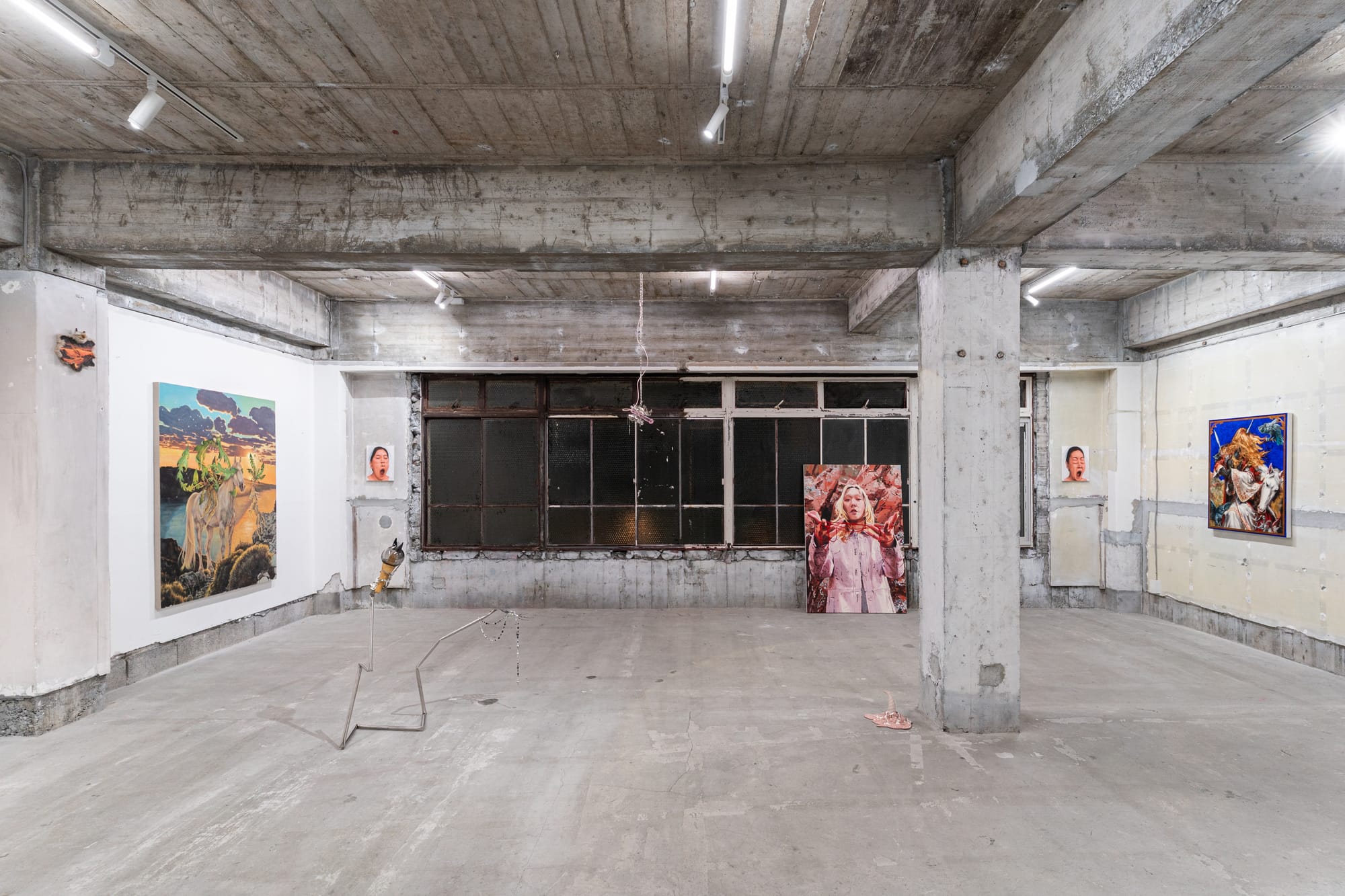Exhibition
Unnatural Selection: I, not I

INSTALLATION VIEW “Unnatural Selection: I, not I“, 2025. Courtesy of the Artist and CON_ & WWNN.
Unnatural Selection: I, not I
Technology is no longer something that exists outside of us. What were once thought of as essential human qualities such as emotion, behaviour, the body, and identity are now tracked, stored, and translated into data that can be processed and predicted. As these shifts accelerate, the criteria that once defined what it meant to be human grow increasingly blurred, until even the memory of such boundaries becomes faint.
Unnatural Selection: I, not I asks whether the category of the human remains meaningful under these conditions. The exhibition moves beyond the familiar binary of technology as threat or salvation and instead considers how our lives, already entangled with technological systems, might be seen anew. It explores how perception and existence are being reorganised within this shifting landscape.
The five participating artists, Dew Kim, Jongwan Jang, Miryu Yoon, Sangho Noh, and Younguk Yi, approach this question through distinct media and attitudes. Their works span painting, installation, performance, and narrative, dismantling familiar notions of humanness while opening space for other interpretations.
Dew Kim (b.1985) examines the intersections of art, religion, and identity at points of tension and collision. Beginning with conflict between opposing elements, he twists and reassembles them to overturn dominant narratives and construct new ones. His work draws on queer and feminist theory, sexuality, sadomasochism, mysticism, and popular culture, destabilising social norms and amplifying marginalised voices. Through destruction, repetition, and play, he transforms repression into experimental acts of liberation. Moving fluidly across sculpture, installation, video, and performance, Kim weaves these elements into totalising narratives that propose new subjectivities at the crossroads of taboo and desire.
Jongwan Jang (b.1983) has long anchored his practice in three emotions he sees as central to human history: anxiety, fantasy, and salvation. His painted landscapes often appear utopian, yet they remain shadowed by unease and doubt. Recently, his work has expanded to a cosmic scale, combining futuristic ideas of evolution and improvement with agrarian motifs. Pastoral scenery and images of plants and animals transform under his hand into futuristic, otherworldly visions. In this process, familiar landscapes become estranged and transcendent, reflecting the uncertainty with which humanity approaches both nature and the future.
Miryu Yoon (b.1991) constructs narratives around trans women characters set against the symbolic backdrop of the cliff. The cliff functions as both a prophetic threshold and a stage where different dimensions converge. Through mythological allegory, she destabilises binary notions of gender, creating layered contexts where female and male, reality and fiction, natural and supernatural, present and future intersect. Her characters, like Tiresias or Hermaphroditus, undergo transformation and trial in order to redefine their worlds. Yoon’s paintings move beyond the dissolution of gender, visualising the possibility of future beings we have yet to encounter.
Sangho Noh (b.1986) reimagines immaterial images generated by artificial intelligence through traditional painting. By rematerialising these digital artefacts, he likens the process to a miracle. His paintings frame the appearance and disappearance of images not as errors but as transcendent events. By equating glitches with divine manifestation, Noh provocatively imagines a post-human mythology that traverses the boundaries of technology and transcendence, chance and divinity. His canvases enact scenes where the immaterial and the material overlap.
Younguk Yi (b.1991) revives human narratives that are increasingly eroded in contemporary society. Using repetition and fragments, he reconstructs desire-driven stories and translates them into painterly compositions through collage and architectural logic. Yi’s works move beyond simple juxtaposition, achieving a new sense of inevitability within pictorial order. While rooted in local and temporal references, his canvases flatten and abstract them into universal, supra-temporal visual narratives. The symbolic repetitions and pictorial structures he develops position his practice as a distinctive exploration of painting’s expanded potential.
This exhibition neither demonises nor idealises technology. It does not offer promises of a better tomorrow. Instead, it prompts us to look at the present from a fresh perspective, awakening the unsettling question: how much of ourselves can we remain?
2025. 10. 03. (Fri) – 2025. 11. 16. (Sun)
CON_ & WWNN